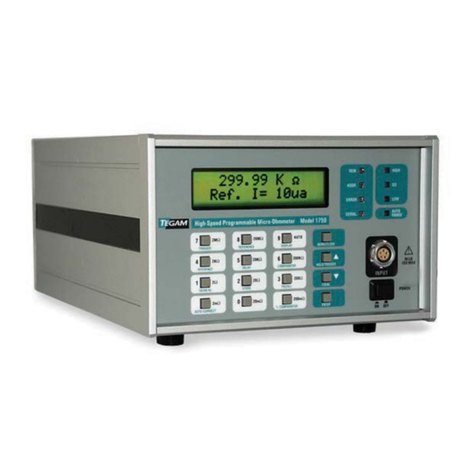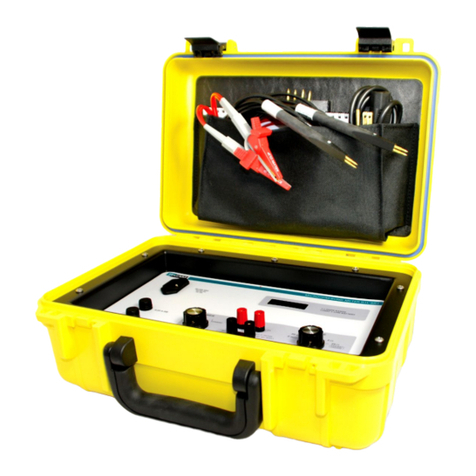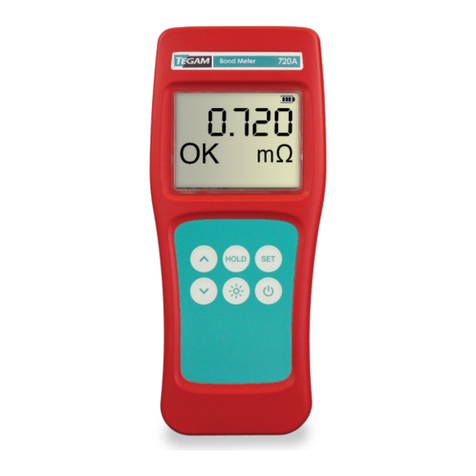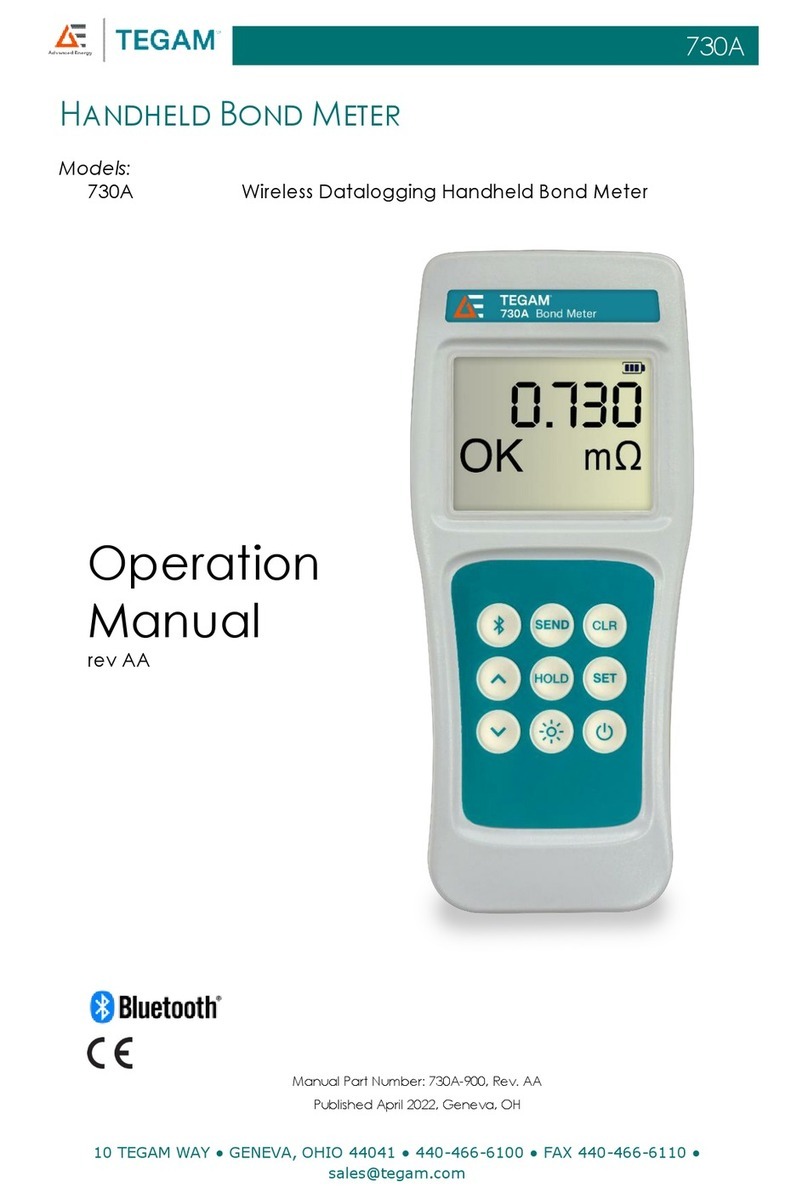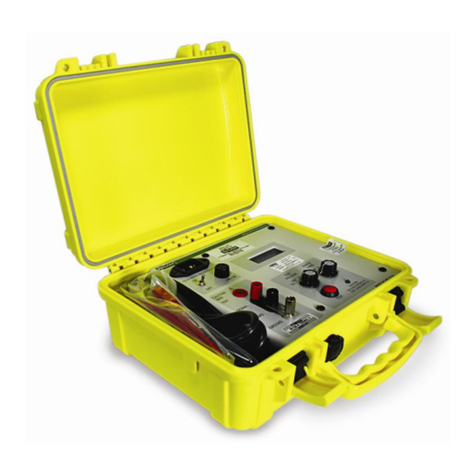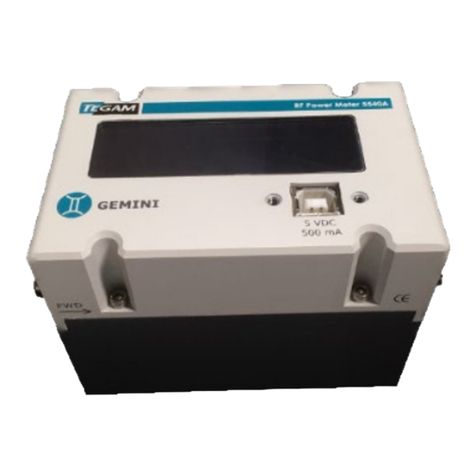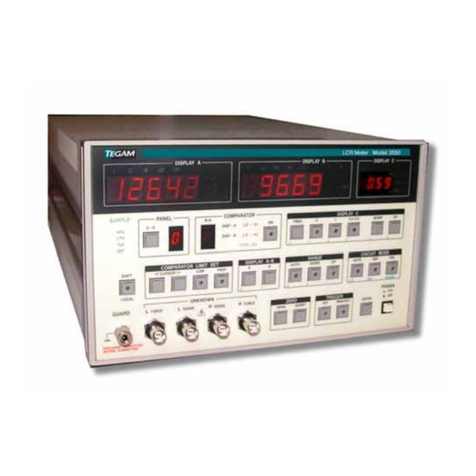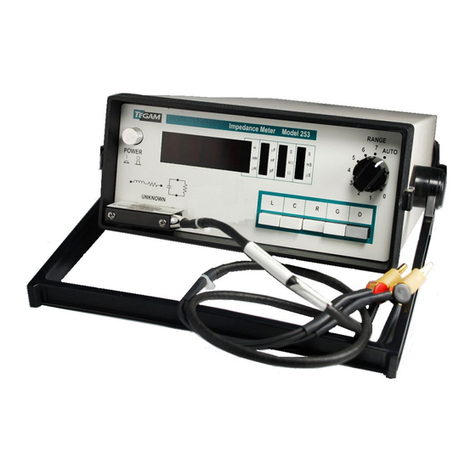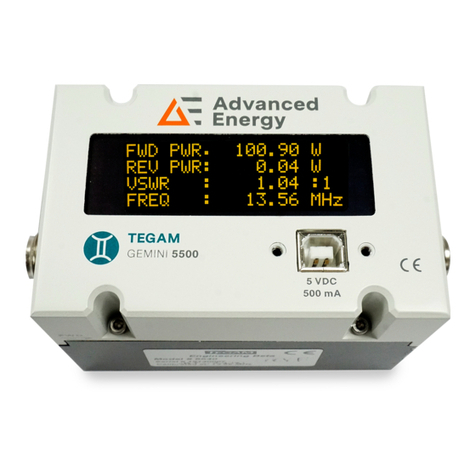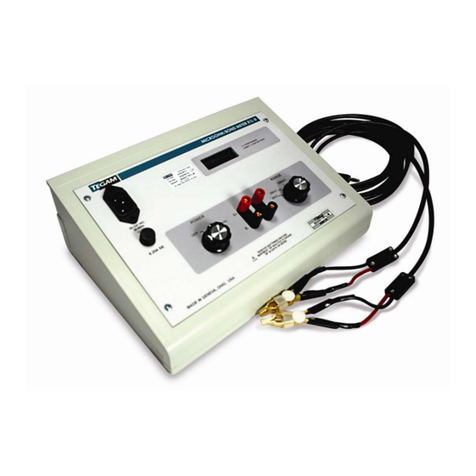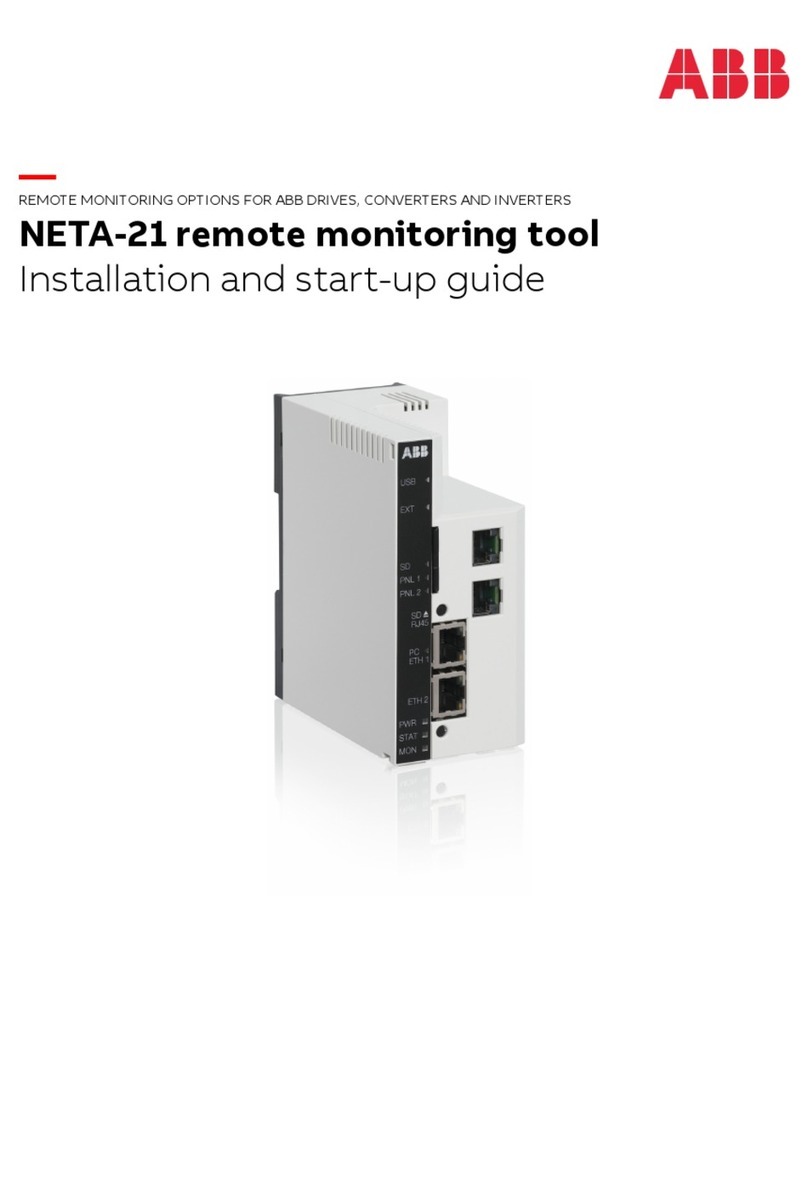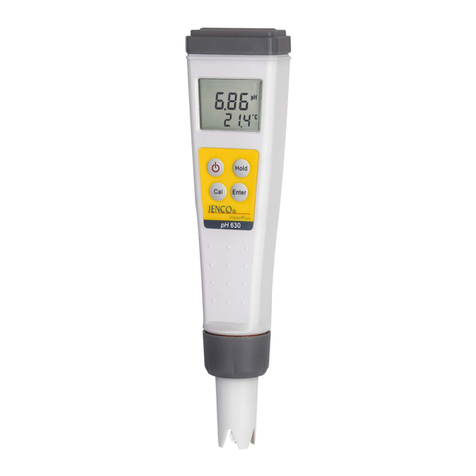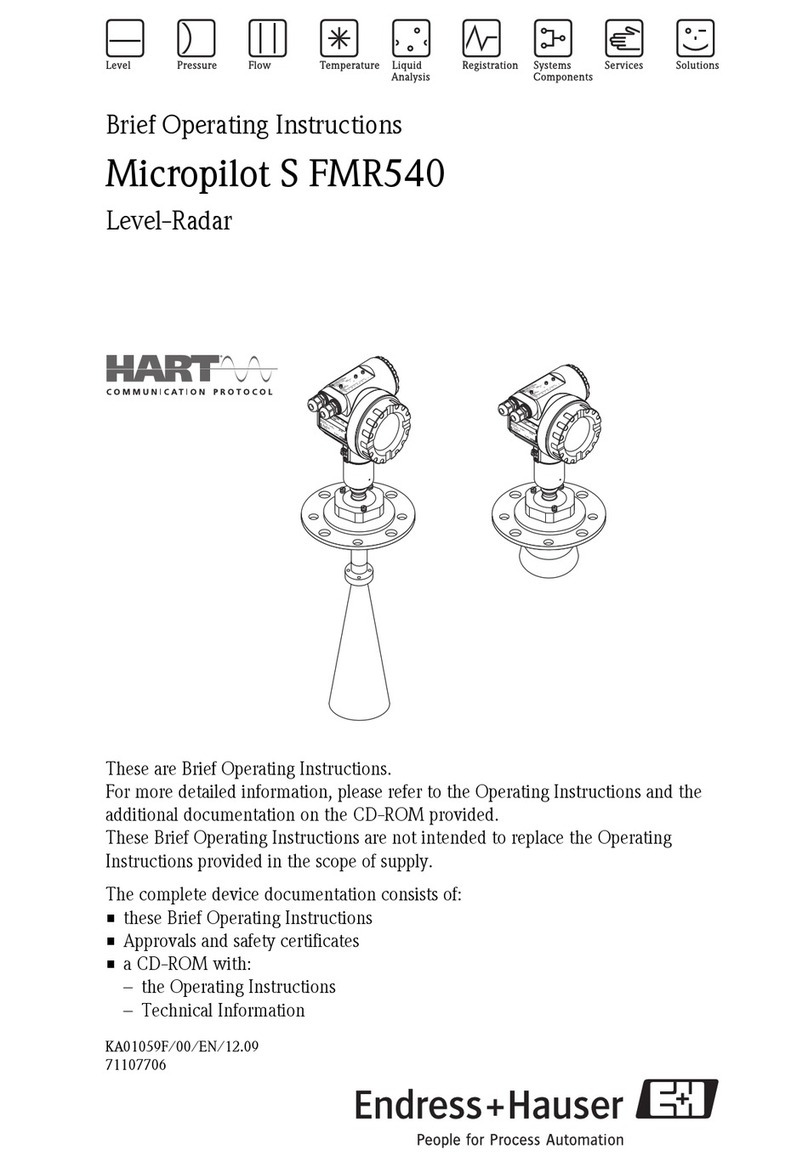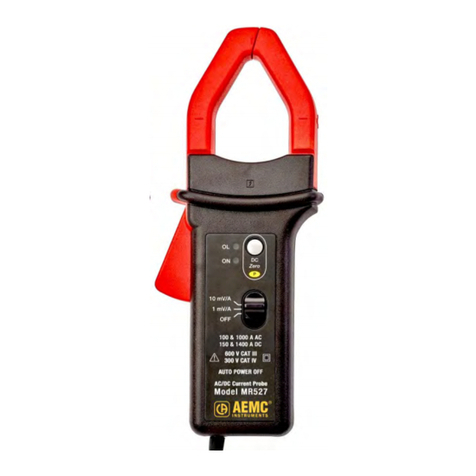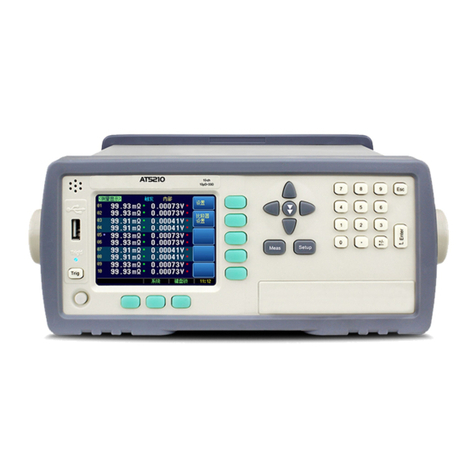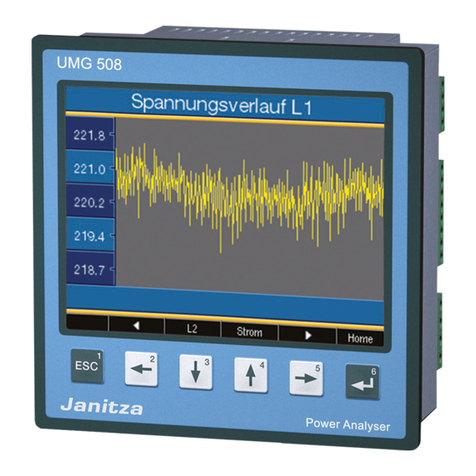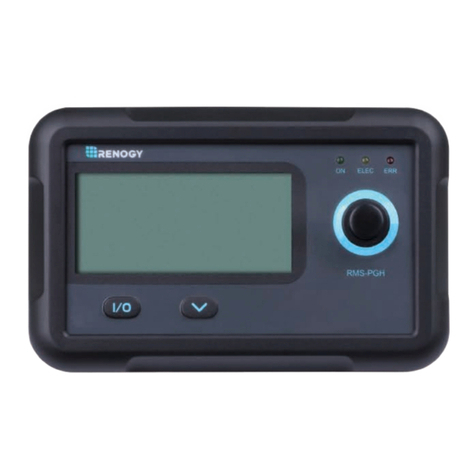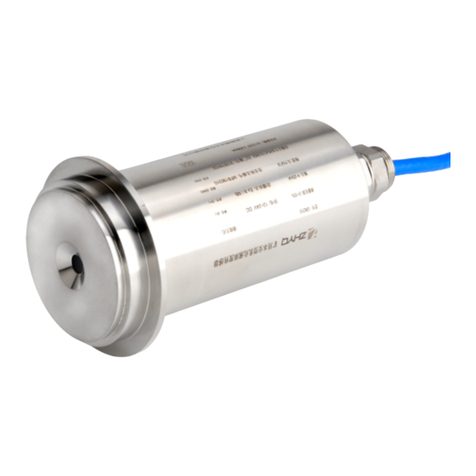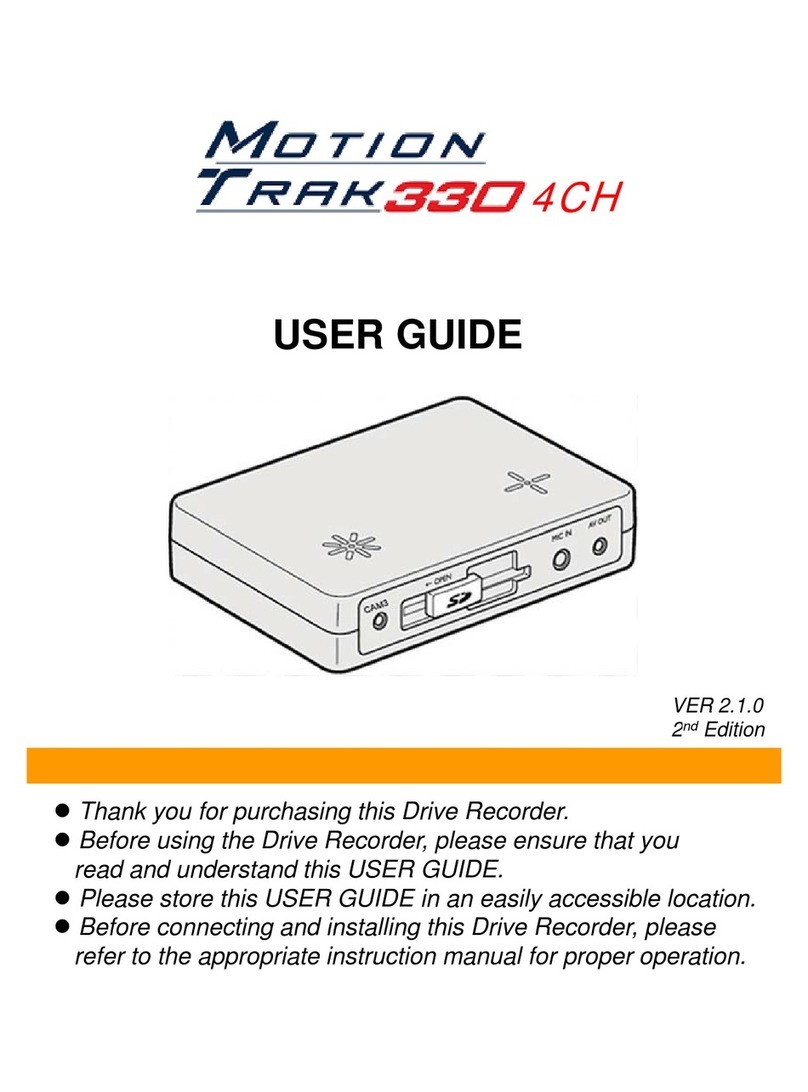Tegam 252 User manual

MODEL 252
Digital Impedance Meter
Instruction Manual
P/N 43158-CD
Rev F
This owner’s manual was as current as possible when this product was manufactured.
However, products are constantly being updated and improved. Because of this, some
differences may occur between the description in this manual and the product you
received.
TEGAM, INC.
TEN TEGAM WAY
GENEVA, OH 44041
TEL: (440) 466-6100
FAX: (440) 466-6110
www.tegam.com
Publication Date: June 2005


Ten Tegam Way, Geneva, Ohio 44041 (440) 466-6100 (440) 466-6110


TABLE OF CONTENTS
DANGEROUS VOLTAGE POTENTIALS EXIST INSIDE THIS INSTRUMENT. MAINTENANCE
INSTRUCTIONS WITHIN THIS MANUAL ARE FOR USE BY QUALIFIED SERVICE PERSONNEL ONLY.
TO AVOID ELECTRICAL SHOCK, DO NOT ATTEMPT ANY SERVICING OTHER THAN THAT
CONTAINED IN THE OPERATION INSTRUCTIONS UNLESS YOU ARE QUALIFIED TO DO SO.
1 DESCRIPTION
1.1 INTRODUCTION 1-1
1.2SPECIFICATIONS 1-2
2 OPERATION
2.1 CONTROLS AND CONNECTORS 2-1
2.1.1FrontPanel 2-1
2.1.2RearPanel 2-3
2.2OPERATINGPROCEDURE 2-4
2.2.1 Power Requirements 2-4
2.2.2ApplyingPower 2-5
2.2.3 Connection to Unknowns 2-6
2.2.3.1 Test Fixture Compensation 2-8
2.2.4 Function Selection 2-9
2.2.5RangeSelection 2-12
2.2.6SummaryofOperation 2-13
2.3 MEASUREMENT TECHNIQUES 2-15
2.3.1 Resistance Measurements at 1kHz 2-15
2.3.2 Capacitance Measurements 2-15
2.3.3 Inductance Measurements 2-18
2.3.4 Determining Quality Factor (Q) of Inductors 2-19
2.3.5 Determining Dissipation Factor (D) of
Capacitors using Nomograph 2-20
2.3.6 Using the Bias Feature 2-22
2.3.7 Signal Output Terminals 2-23
2.3.8 Measuring Grounded Unknowns 2-23
2.3.9 Measuring Battery Impedance 2-26
2.3.10ComponentSorting 2-28
3 CIRCUIT DESCRIPTIONS
3.1GENERALDESCRIPTION 3-1
i

TABLE OF CONTENTS (continued)
4 MAINTENANCE
4.1 CALIBRATION PROCEDURE 4-1
4.1.1PowerSupplyCheck 4-2
4.1.2 Oscillator Adjust 4-2
4.1.3L,C,R,GAlignment 4-2
4.1.4 Dissipation Factor (D) Alignment 4-3
4.2MAINTENANCE 4-5
4.2.1PreventiveMaintenance 4-5
4.2.1.1 Cleaning 4-5
4.2.1.2 Visual Inspection 4-5
4.3 PREPARATION FOR CALIBRATION OR REPAIR SERVICE 4-6
4.4 WARRANTY
ii

SECTION 1
DESCRIPTION
1.1 INTRODUCTION
Model 252 Digital Impedance Meter is a semi-automatic instrument which permits rapid
measurement of inductance (L), capacitance (C), resistance (R), conductance (G) and dissipation
factor (D) at a test frequency of 1kHz. Measurement accuracy and versatility satisfies most
demanding engineering or Scientific applications.
To operate, merely push the button for the desired function, manually turn the knob to the desired
range, and connect the unknown. KELVIN KLIPS® test leads are included, thus ensuring true four-
terminal connections. The position of the range switch, used in conjunction with the desired
function button and front panel range scale, indicate the unit of measurement being displayed by the
3-1/2 digit LED readout.
Excellent reliability of the Model 252 is assured through use of solid-state devices and etched circuit
board construction. Its small size is ideal for use on bench tops where work space may be at a
premium. The carrying handle tilts the unit to a convenient viewing angle. Rear panel brackets
provide line cord storage and enable it to be operated in a vertical position.
1-1

Table 1-1. Model 252 Specifications
Test Frequency: 1kHz ±1%.
Unknown Excitation: The 1kHz voltage (Vx) and current (Ix) levels listed in Table 1-1 are held
constant by an internal amplitude control circuit.
Measurement Rate: Four per second; one second is required for first reading after connecting
unknown to terminals.
Measurement Display: 3-1/2 digit LED with decimal point. Blanked for overload conditions.
Unit Display: Unit of mesurement being displayed by the LED readout is indicated by position
of the range switch, used in conjunction with the desired function button and the
front panel range scale.
External Bias: Rear panel terminals are provided for connection of external supply. 0V to 50VDC,
0.1A maximum. (Read Section 2.2.6 before using external bias.)
Static Charge Protection: Diode and resistor discharge network.
1-2
1.2 SPECIFICATIONS

Connection to Unknown: Four-terminal, shielded, connections are provided by the KELVIN KLIPS®
cable assembly (Tegam Part Number 43072) supplied with the Model
252.
Outputs: Analog signals of 1V per 1,000 counts, 1kΩsource resistance is available at rear panel.
L, C, R, or G, with simultaneous output of D for L or C.
Power Consumption: 4 watts typical.
Power Requirements: 100 to 125V or 200to250V,50/60Hz.
Fuse: 110V: 1/16A 250VAC Slow-Blow
220V:1/20A 250VAC Slow-Blow
Size: Height (with feet) - 100mm (3.9 in.)
Width - 260mm (10.2 in.)
Depth (overall) - 370mm (14.6 in.)
Weight: 3.2kg (7 lb.)
Accessories supplied with Model 252: Part No.
KELVIN KLIPS® Four-Terminal Clips 43072
Instruction Manual 43158
Options Available: Part No.
Model 1412B Universal Limits Comparator 31412B
Sorting Fixture Model 2001 (low frequency) 32001
Cable Assembly (for Model 2001 connection) 43586
Front Panel Dust Cover 43374
AdditionalAccessories PartNo.
Chip Tweezers 2005B/SP5132
Kelvin Klip Rebuild Kit KK100
Chip Tweezer Rebuild Kit 47422
1-3


SECTION 2
OPERATION
2.1 CONTROLS AND CONNECTORS
2.1.1 Front Panel
Figure 2-1. Model 252 Front Panel
1. ON/OFF Switch – A push-on, push-off switch for applying and
removing power from the instrument.
2. UNKNOWN Connector – Terminals designed to be used with KELVIN
KLIPS® test leads (Tegam Part No. 43072),
Provided with Model 252, to provide a true
Four-terminal connection to the unknown or
Testfixture.
3. L, R, C, and G Pushbuttons – Function pushbuttons select the type
of meter circuit that will measure
series inductance (L) and resistance
(R) or parallel capacitance (C) and
conductance (G).
2-1

4. D Pushbutton -- The push-to-read D (dissipation factor) pushbutton displays the D of a capacitor or
inductor when the C or L function is selected.
5. Range Switch -- Selects the decimal multiplier and units of measurement for the meter circuit being
used. The basic multipliers and units are: H (henrys), mH (millihenrys), µH
(microhenrys), pF (microfarads), nF (nanofarads), pF (picofarads), k Ω(kilohms),
Ω(ohms), mS (millisiemens), and µS(microsiemens).
6. Display — A 3-1/2-digit readout for all functions.
7. Tiltstand Handle -- Aids portability; tilts instrument for easier viewing of the LED display.
2-2

2.1.2 Rear Panel
Figure 2-2. Model 252 Rear Panel
1. Bias Terminals – Allows application of a 2V to 50VDC, 0.1A maximum bias to the
capacitor being measured. (The shorting bar must be in place
when not using bias feature.) See Section 2.3.6 before
using external bias.
2. Output Terminals – Provides two analog signals proporational to the function
selected (L, R, C, or G) and D (for L and C). These terminals
can be used with external DVM’s (for increased full scale
readings or resolution capability), with chart recorders, or with
limits comparators, such as the Tegam Model 1412B.
3. Fuse – A 1/16A, 250V, type MDL Slow Blow for 110V line voltage, or a 1/20A, 250V
type MDL Slow Blow for 220V line voltage.
2-3

2.2 OPERATING PROCEDURE
2.2.1 Power Requirements
Before turning the power ON, make sure the instrument is set to the proper line voltage.
The Model 252 contains an internal slide switch to select the nominal line voltage
(see Figure 2-3). In its up position, the switch selects 100 to 125VAC, 50/60Hz operation. In
the down position it selects 200 to 250VAC, 50/60Hz operation.
WHEN CHANGING FROM 110VAC OPERATION TO 220VAC OPERATION (OR
IN OPPOSITE ORDER), BE SURE TO REPLACE THE REAR PANEL AC FUSE
WITH THE PROPER VALUE FOR THE LINE VOLTAGE SELECTED.
Figure 2-3. Line Voltage Switch
2-4

Because of differing power requirements, all instruments shipped outside the United States are without a
power cord connector. When placing a connector on the power cord, care must be taken to assure
the wires are connected properly. The green or green with yellow stripe wire is always connected to
earth ground. The white or light blue wire is connected to the neutral side of the power line. And,
the black or brown wire is connected to the high side of the power line.
2.2.2 Applying Power
The push-on, push-off, ON/OFF button in its depressed position applies power to the measurement
circuitry. When power is applied, the LED display lights and reads zero when in C and G modes or the
display is blank with the decimal point lit in the L and R modes.
2-5

2.2.3 Connection to Unknowns
The KELVIN KLIP® test lead set (Tegam Part No. 43072) is plugged into the 252’s front panel
UNKNOWN connector. The test leads connector cover is spring-locking and should be squeezed together
before inserting or removing.
The test leads provide a shielded, four-terminal connection to the unknown (see Figure 2-5a). The clip
with the red hinge-spool provides the HI DRIVE and HI SENSE connections to the unknown and the clip
with the black hinge-spool make the LO DRIVE and LO SENSE connections.
Figure 2-5a.
2-6
Figure 2-5a.

Figure 2-5b.
For connection to three terminal unknowns (the third connection is to ground), a ground wire must be
added to the test lead set. This wire is connected as in Figure 2-5b.
2-7

2.2.3.1 Test Fixture Compensation
The Model 252 uses a 3.3pF capacitor (C6 in Figure 2-6) to compensate for the capacitance of
the test leads. If the 252 is used with a test fixture, the larger capacitance of the fixture must
also be compensated for. There are two methods for compensating this larger capacitance. The
first method is to make a zero capacitance measurement with the test fixture connected. This
reading is mentally subtracted from all other measurements.
The second method for compensating the larger capacitance is to change the value of C6 from 3.3 pF
to 10 pF and to add an external trim capacitor. The external trim capacitor is connected in parallel with
the unknown and should be of such a value that the test fixture capacitance can be trimmed to zero.
Typically, the maximum value of this trim capacitor is 15pF. The trim capacitor can either be added
to the test cable, between Terminals 1 and 3 of the connector as shown in Figure 2-6, or it can be
added to the test fixture.
Figure 2-6. Test Fixture Compensation
2-8

2.2.4 Function Selection
Model 252 is designed to measure series inductance (L), parallel capacitance (C), series resistance (R),
parallel conductance (G), and dissipation factor (D) of inductance and capacitance. One of these
measurement modes is selected by depressing the proper front panel button. (If all buttons are in their
out position, the instrument reverts to the inductance measurement mode.)
Example: Select the capacitance measurement function. (Depress the C pushbutton.)
2-9

Example: Select the conductance measurement function. (Depress the G Pushbutton.)
If a negative sign appears on the display when measuring an unknown, possible causes are:
“C” button has been pushed when measuring an inductor.
“L” button has been pushed when measuring a capacitor.
The unknown is more capacitive (or inductive) than suspected. For example, an
inductor that resonates below 1kHz will measure as though it were a capacitor.
A diode requires bias voltage (a negative reading may appear if bias voltage is not applied).
2-10
Table of contents
Other Tegam Measuring Instrument manuals
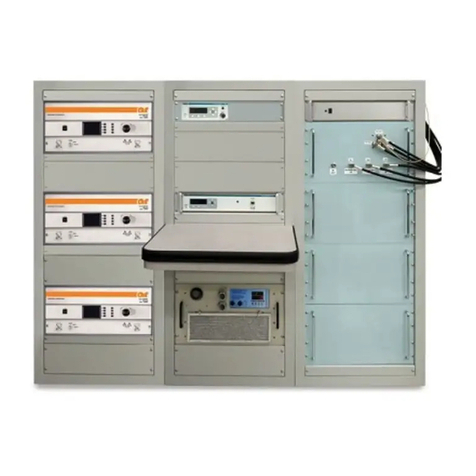
Tegam
Tegam 1316A User manual

Tegam
Tegam 1806 User manual
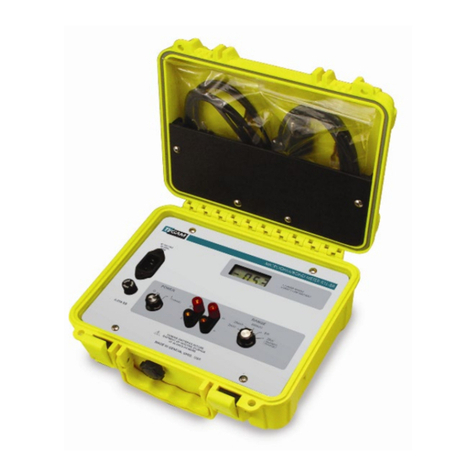
Tegam
Tegam R1L-BI User manual

Tegam
Tegam R1L-D1 User manual
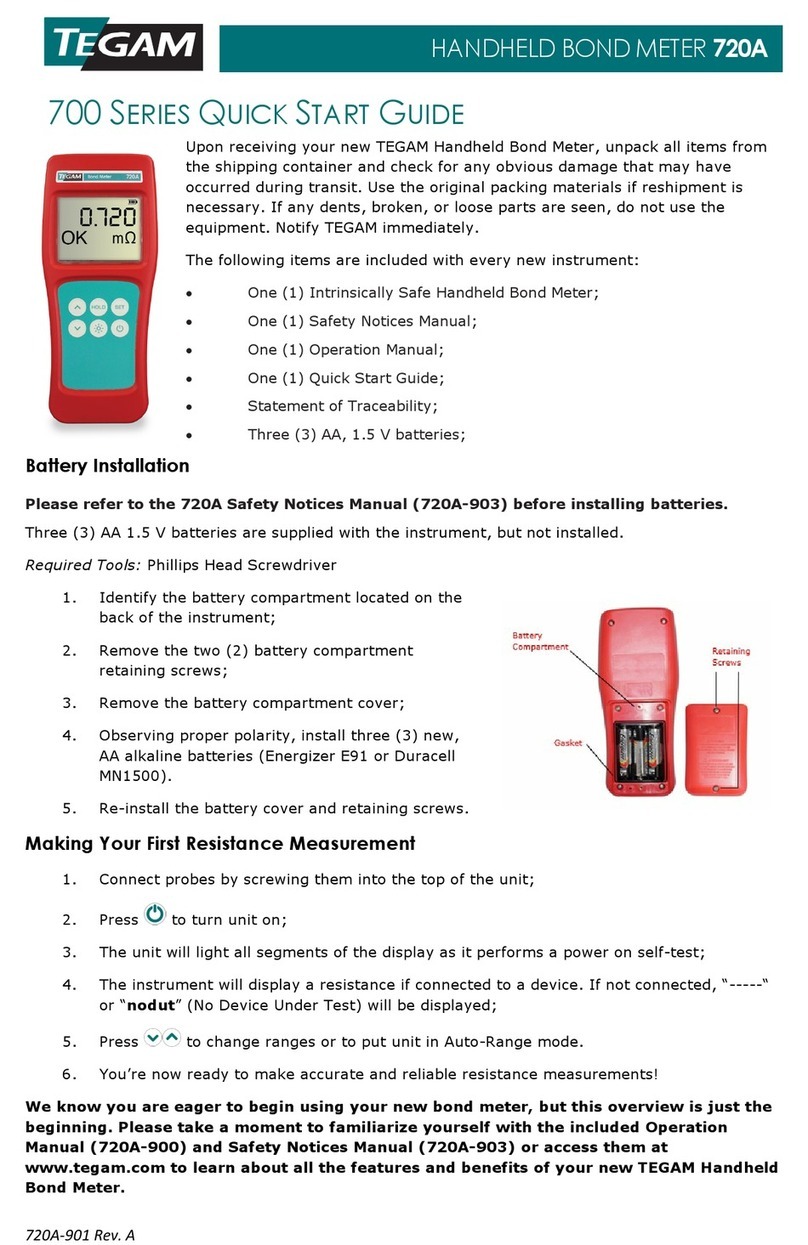
Tegam
Tegam 720A User manual
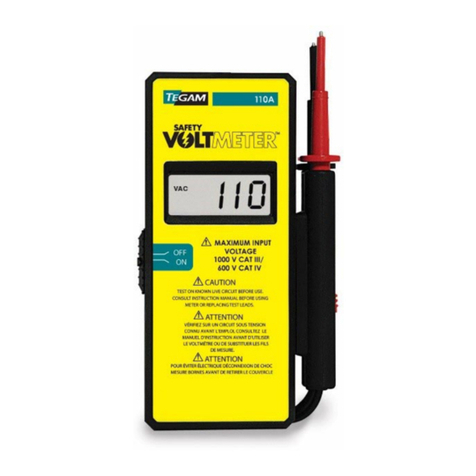
Tegam
Tegam 110A User manual
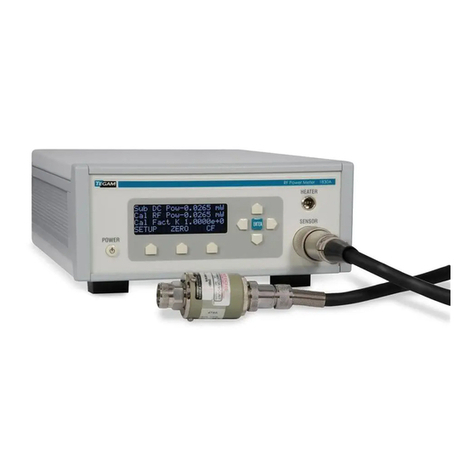
Tegam
Tegam 1830A Troubleshooting guide
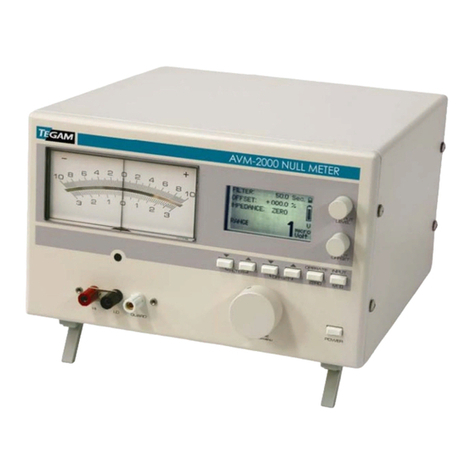
Tegam
Tegam AVM-2000 Troubleshooting guide
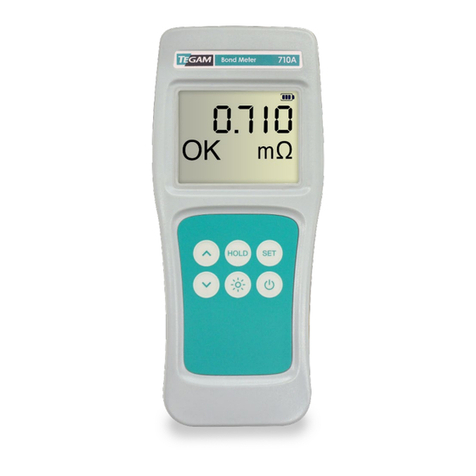
Tegam
Tegam 710A User manual
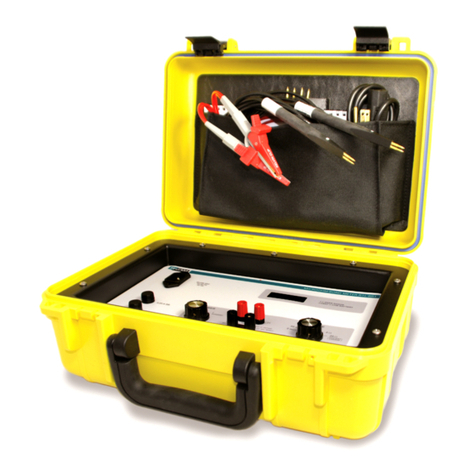
Tegam
Tegam R1L-BR1 User manual
Popular Measuring Instrument manuals by other brands
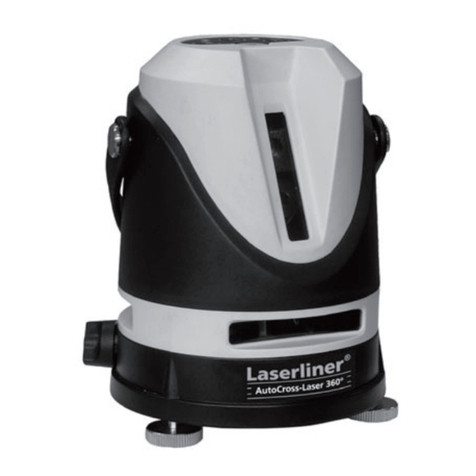
LaserLiner
LaserLiner AutoCross-Laser 360 PowerBright operating instructions
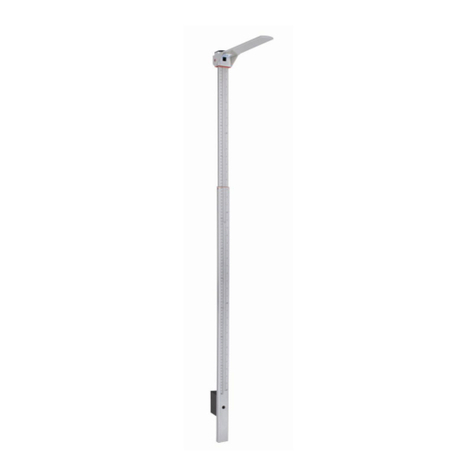
KERN
KERN MSF 200 operating instructions
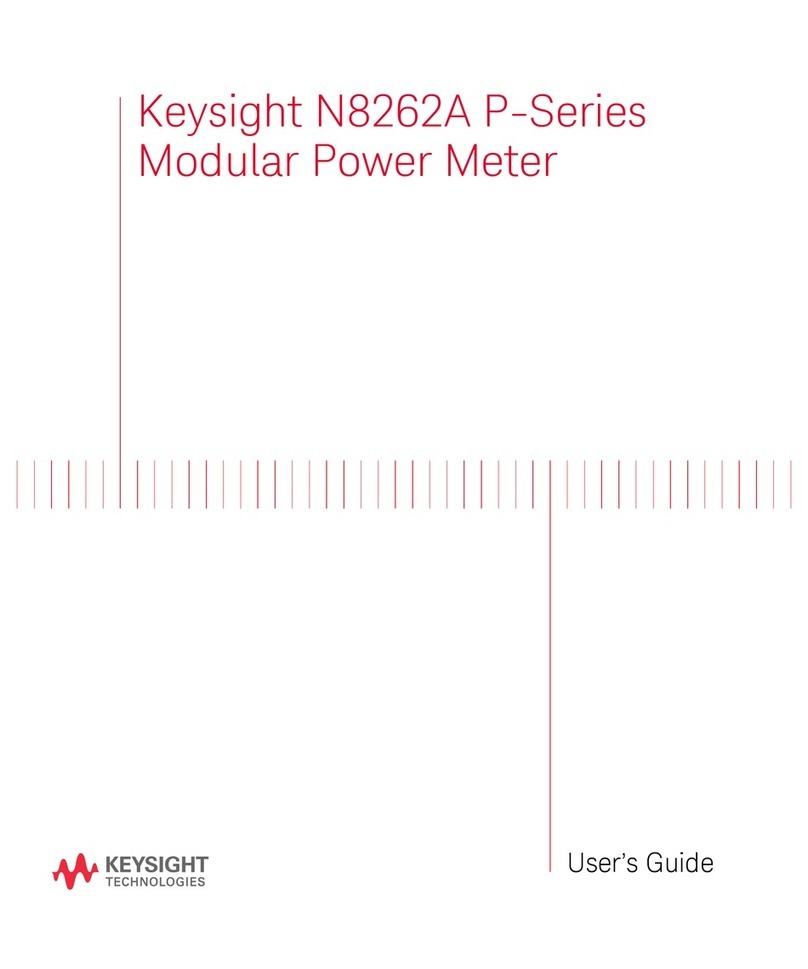
Keysight Technologies
Keysight Technologies N8262A P Series user guide

Montana Instruments
Montana Instruments CryoCore quick start

Rae
Rae VRAE PGM-7800 Operation and maintenance manual
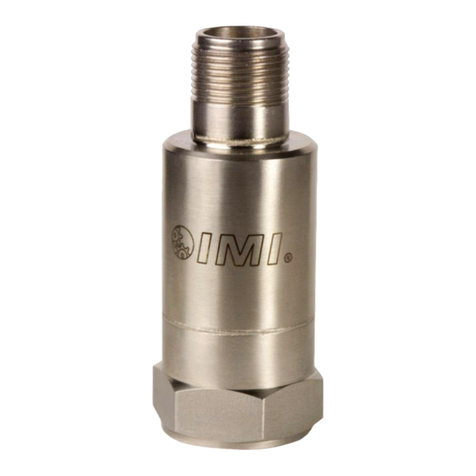
PCB Piezotronics
PCB Piezotronics IMI SENSORS 645B01 Installation and operating manual
